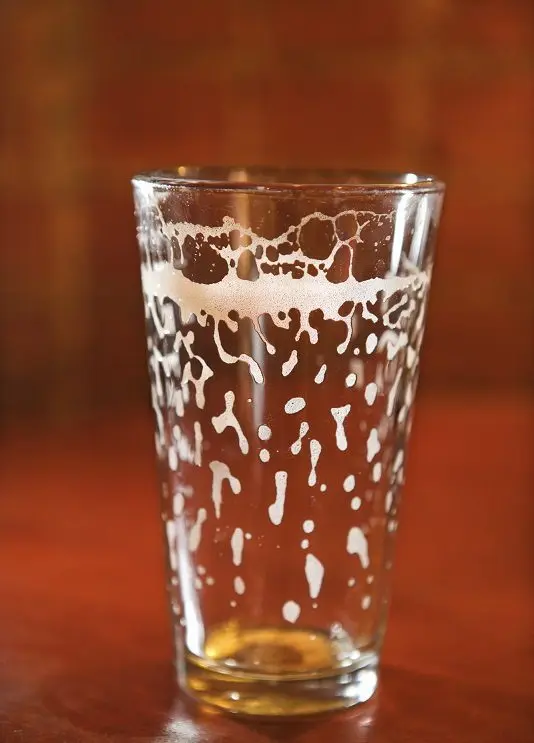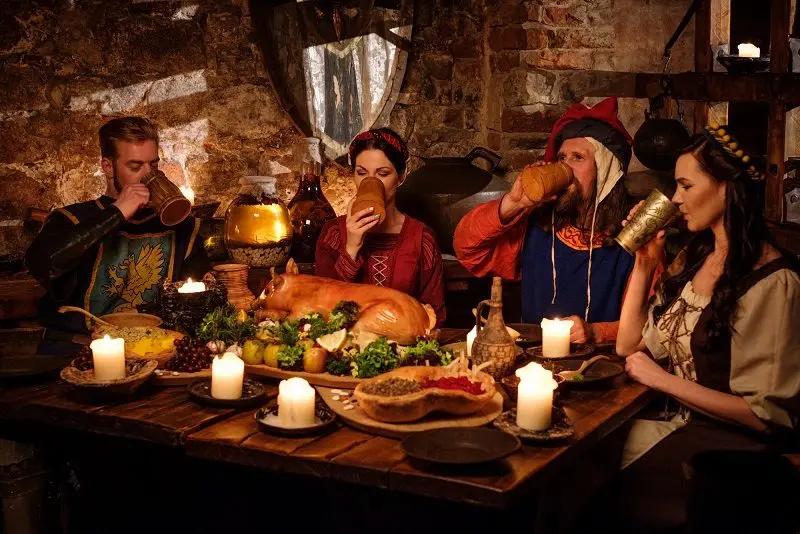Beer appeared in Egypt in the Stone Age, conquered all continents in a couple of millennia and saved more than one million lives from hunger, epidemics and diseases. The historical, scientific and medical facts given below make one feel respect for the “liquid bread”.
1. Beer is the most popular alcoholic beverage in the world and the third most consumed drink after water and tea. At any given time, 0,7% of the world’s population is under the influence of alcohol. This is about 50 million people, of which at least 10 million are drunk on beer.
2. The world leader in terms of beer production is the Belgian company AB-InBev (owns the brands Budweiser (Bud), Corona, Stella Artois, Hoegaarden, Leffe, Staropramen, Taller, Beck’s, Lowenbrau, Franziskaner, Spaten, Bass, etc.), producing 358,8 million hectoliters per year.
3. According to the Guinness Book of Records, Stephen Petrosino became the world champion in speed drinking beer, who on June 22, 1977 in Pennsylvania drained 1 liter of beer in 1,3 seconds.
4. The chef of the Imperial Hotel in the Czech city of Ostrava, named Mider, drank the maximum amount of beer at a time. In 1970, at an exhibition in Osaka, a man poured 10,5 liters into himself in 3 minutes and came up with the nickname “Big Beer Tank”. For the sake of “training” Mider drank 8 liters a day for a couple of years. Several attempts to break this record ended in death.
5. Most of the beer is drunk in the Czech Republic, each inhabitant of the country has an average of 156 liters per year. The second place is occupied by Ireland (131 l), the third – by Germany (115 l).
6. The calorie content of beer is lower than that of apple juice, Coca-Cola, other sugary sodas and milk.
7. There are over 400 varieties and types of beer. In addition to traditional ales and lagers, you can taste foamy drinks with the taste of pizza and chocolate donuts. With milk, banana, watermelon or coffee.
8. Most types of beer freeze at -2°C, and after defrosting remain usable, but lose their taste and aroma.
9. The weakest beer was brewed in 1918 in Germany, the drink contained only 0,2% alcohol. The strongest beer in the world is called “Snake Venom”, contains 67,5% alcohol, is prepared in Scotland by evaporating water from ordinary beer after fermentation. The manufacturer recommends tasting the drink in small sips.
10. The largest beer festival is Oktoberfest, which is held annually in Munich for 16 days from the last days of September to the first weekend of October. About 6 million tourists come to the festival each time.
11. A third of the world’s breweries are concentrated in Bavaria.
12. The science that studies beer is called Zythology. The term is derived from two Greek words: “Zythos” (beer) and “Logos” (research). And in Germany there is the Munich Beer Institute, whose scientists have scientifically proven that due to the unique composition, 1 liter of unfiltered German beer is 10 times healthier than 1 liter of milk.
13. According to studies, beer strengthens bones and reduces the risk of kidney stones by 40%.
14. To enjoy the taste of beer, you need to choose the right glass, each type and variety requires a separate one. The worst decision is to drink beer from a bottle. Interestingly, the average bar visitor drinks a straight cylindrical mug of beer in 11 minutes, and a glass expanding to the top in 7 minutes (in both cases, the volume is 0,5 liters).
15. The largest beer mug was made of tin in 1985 in Kuala Lumpur (Malaysia). Height – 198,7 cm, capacity – 2796 liters.
16. The most expensive beer in the world is Vielle Bon Secours. For a 12-liter bottle, you will have to pay about $ 1000. The drink (it comes in light, amber and dark) is sold only in the Bierdrome bar in London, and a minimum of 2 people are required to pour into glasses.
17. Hops belongs to the same group of flowering plants as marijuana, but does not have a narcotic effect.

18. Sonoselicaphobia is an empty beer glass disease that is officially recognized and treatable.
19. The inventors of beer are the ancient Egyptians, who brewed the drink in the Neolithic era around 9500 BC. e. But they never learned to filter the wort, so in order not to swallow the remains of malt (grains), they drank beer through a straw. When meeting, the Egyptians greeted each other with the phrase “Bread and beer.” After studying the remains of beer vessels under an electron microscope, the British managed to recreate the Egyptian beer recipe. The drink is called King Tutankhamen and sells for £50 a bottle.
20. Babylon is also rich in beer traditions. According to ancient custom, the first month after the wedding, the father-in-law gave honey beer to the son-in-law, and the period itself was called the “honeymoon”. If the brewer did not comply with the quality, he could be executed. The condemned were given the choice of being drowned in their own beer or drinking it to death.
21. Residents of medieval Europe drank 300 liters of beer a year due to poor water quality. The fact is that fermentation killed most pathogenic bacteria, which made even bad beer much safer than pure water. Thanks to carbohydrates and a high content of useful microelements and vitamins in the composition, beer received a second name – “liquid bread”. Monks involved in brewing were allowed to drink 5 liters of their drink per day, regardless of the day of the week, holiday or fast.

22. Only at the end of the XNUMXth century did brewing become a male occupation. Until that time, the process was mainly in charge of women, and only beautiful ones were allowed to work. Women were also chosen as patrons of beer – among the Sumerians it was the goddess Ninkasi, and among the Egyptians – Menket.
23. The paradise of the ancient Vikings was called Valhalla, where the warriors who died in battle every day were given honey and beer by the ever-milking goat Heidrun.
24. The oldest existing brand of beer is the Bavarian Lowenbrau, which appeared in 1383. Wars, plagues, revolutions and the technological process could not make the brand disappear for centuries.
25. Previously, English pubs served beer in ceramic mugs with whistles on the handles. To ask for more and not to shout over the noisy crowd, the visitor only had to dangle into the pen.
26. The world’s largest beer museum is located in Kentucky (USA). In addition to bottles, labels, caps and exhibits of beer equipment, the establishment has a bar with 1000 seats.
27. By law in the city of Ames (Iowa), a man is forbidden to go to bed with a woman if he has taken more than 3 sips of beer.
28. To obtain elite “marble” beef, the Japanese give beer to cows and massage the animals. The cost of such meat is 6-8 times higher than usual.
29. Diamonds mined in Sierra Leone are immersed in beer for examination, as visual defects in gemstones are better visible this way.
30. Bubbles in a glass of Guinness beer (Guinness) go down, while in the rest of the beer – rises. This phenomenon is explained by two factors. The first is that for Guinness gasification, instead of carbon dioxide, nitrogen is used, which dissolves in water worse than carbon dioxide. The second is that light bubbles are more noticeable against the background of dark beer.









